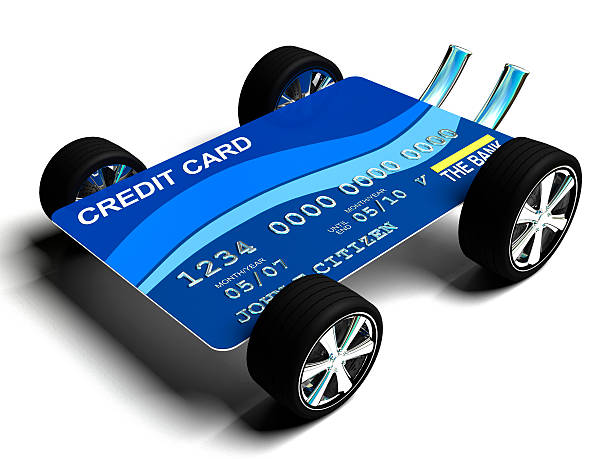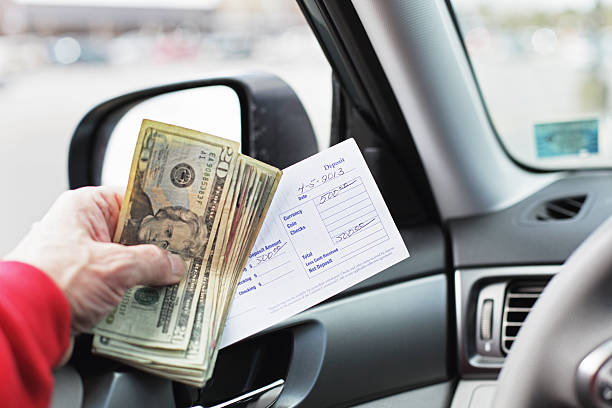Consumer auto receivables finance (CARF) is a type of asset-backed financing that involves pooling together a portfolio of auto loans or leases made to individual consumers and selling the cash flows from those loans or leases to investors in the form of asset-backed securities (ABS).
The cash flows from the auto loans or leases serve as collateral for the ABS, and the investors receive payments from the cash flows generated by the underlying auto loans or leases.
CARF is a common form of securitization in the auto finance industry and allows lenders to monetize the cash flows from their auto loan or lease portfolios while transferring the credit risk to investors. CARF can be beneficial for both lenders and investors, as it provides access to capital and diversification opportunities, respectively.
However, it’s important to note that securitization, like any investment, carries risks. Investors should carefully evaluate the credit quality of the underlying auto loans or leases, the structure of the securitization, and the potential risks associated with the issuer or servicer of the ABS.
RELATED
- Prime Auto Finance – Apply Now
- Red Camera Financing
- Roof Financing For Bad Credit Allen
- 4 Ways Accident Insurance Can Benefit You
Securitization in the Auto Finance Industry

Securitization is a common practice in the auto finance industry, where lenders pool together a portfolio of auto loans or leases and sell the cash flows from those loans or leases to investors in the form of asset-backed securities (ABS). Securitization allows lenders to transfer the credit risk associated with their loan or lease portfolios to investors while providing access to capital to fund new loans or leases.
The securitization process in the auto finance industry typically involves the following steps:
- Origination: Lenders originate auto loans or leases to individual consumers.
- Aggregation: The lender pools together a group of loans or leases with similar characteristics, such as credit score, loan term, or vehicle type.
- Structuring: The lender creates a special purpose vehicle (SPV) to hold the auto loans or leases and issue asset-backed securities to investors. The cash flows from the loans or leases serve as collateral for the ABS.
- Rating: The ABS is typically rated by credit rating agencies based on the credit quality of the underlying loans or leases.
- Sale: The ABS is sold to investors, who receive payments from the cash flows generated by the underlying auto loans or leases.
- Servicing: The lender or a third-party servicer collects payments from the borrowers and distributes the payments to the investors.
Securitization in the auto finance industry has several benefits for lenders, including access to capital, reduced credit risk, and improved liquidity. However, it also carries risks for both lenders and investors, including the credit quality of the underlying loans or leases, interest rate risk, and liquidity risk.
Benefits of Consumer auto receivables finance (CARF) for lenders

Consumer auto receivables finance (CARF) provides several benefits to lenders, including:
- Access to capital: By securitizing their auto loan or lease portfolios, lenders can access capital markets and sell their cash flows to investors. This allows lenders to free up capital and fund new loans or leases.
- Reduced credit risk: Securitization allows lenders to transfer the credit risk associated with their loan or lease portfolios to investors. This can reduce the lender’s exposure to credit losses and improve their credit rating.
- Improved liquidity: Selling auto loans or leasing cash flows to investors can improve the lender’s liquidity by converting illiquid assets into cash. This can provide lenders with more flexibility to manage their balance sheets and respond to changes in the market.
- Diversification opportunities: CARF allows lenders to diversify their funding sources and reduce their reliance on traditional funding sources, such as deposits or wholesale funding.
- Improved profitability: By securitizing their auto loan or lease portfolios, lenders can generate fee income from structuring and selling the ABS. This can improve the lender’s profitability and return on equity.
Overall, CARF can be a useful tool for lenders to manage their balance sheets and access capital markets, while transferring credit risk to investors. However, it’s important to note that securitization carries risks, and lenders should carefully evaluate the credit quality of the underlying loans or leases, the structure of the securitization, and the potential risks associated with the issuer or servicer of the ABS.
Benefits of consumer auto receivables finance (CARF) for investors

Investing in consumer auto receivables finance (CARF) can provide several benefits to investors, including:
- Diversification opportunities: Investing in CARF can provide investors with exposure to the auto finance market and diversify their investment portfolio.
- Predictable cash flows: The cash flows from the underlying auto loans or leases can provide investors with a predictable stream of income, which can be especially attractive in a low-interest-rate environment.
- Reduced credit risk: While investing in CARF carries credit risk, the credit risk associated with the underlying auto loans or leases is typically lower than other forms of consumer credit, such as credit card receivables. Additionally, the credit risk associated with CARF is often reduced through credit enhancement mechanisms, such as over-collateralization, subordination, and reserve accounts.
- High credit ratings: CARF securities are often rated by credit rating agencies, which can provide investors with a degree of confidence in the credit quality of the securities.
- Liquidity: CARF securities are often traded in secondary markets, which can provide investors with liquidity and the ability to exit their investments if needed.
- Attractive yields: Due to the credit enhancement mechanisms and the predictable cash flows associated with CARF securities, investors can often earn attractive yields relative to other fixed-income investments.
Overall, CARF can provide investors with a unique investment opportunity to earn attractive yields and diversify their investment portfolio. However, investors should carefully evaluate the credit quality of the underlying auto loans or leases, the structure of the securitization, and the potential risks associated with the issuer or servicer of the ABS.
Risks associated with Consumer auto receivables finance (CARF)

Consumer auto receivables finance (CARF) carries several risks for both lenders and investors. Some of the key risks associated with CARF include:
- Credit risk: CARF is exposed to credit risk associated with the underlying auto loans or leases. Defaults or delinquencies in the underlying auto loans or leases can result in lower cash flows for investors and losses for lenders.
- Interest rate risk: Changes in interest rates can affect the value of CARF securities. Rising interest rates can decrease the value of fixed-rate securities while falling interest rates can decrease the value of floating-rate securities.
- Liquidity risk: In times of market stress or disruption, liquidity in the CARF market can be limited, making it difficult for investors to exit their investments.
- Servicing risk: The quality of loan servicing can affect the performance of CARF securities. If the servicer is unable to collect payments or properly manage delinquent loans, this can result in lower cash flows for investors.
- Prepayment risk: Borrowers can prepay their auto loans or leases, which can result in early repayment of the underlying securities. This can negatively impact investors who were expecting to receive cash flows for a longer period.
- Collateral risk: The value of the underlying collateral (i.e., the vehicles) can decline, resulting in lower recoveries for lenders in the event of default.
- Structural risk: The structure of securitization can affect the performance of CARF securities. For example, if the credit enhancement mechanisms (such as over-collateralization, subordination, and reserve accounts) are not adequate, this can increase the credit risk of the securities.
Overall, while CARF can provide benefits to both lenders and investors, it’s important to carefully evaluate the risks associated with these securities and perform thorough due diligence before investing or originating these loans or leases.
CARF vs. other types of asset-backed financing

Consumer auto receivables finance (CARF) is one type of asset-backed financing, where the underlying asset is auto loans or leases. Other types of asset-backed financing include:
- Credit card receivables: In this type of asset-backed financing, the underlying asset is credit card debt. Similar to CARF, credit card receivables are securitized and sold to investors.
- Mortgage-backed securities: In this type of asset-backed financing, the underlying asset is mortgage loans. Mortgage loans are pooled together, and the cash flows from the mortgages are used to pay interest and principal to investors.
- Collateralized loan obligations (CLOs): In this type of asset-backed financing, the underlying asset is a pool of corporate loans. Similar to CARF, CLOs are securitized and sold to investors.
- Equipment financing: In this type of asset-backed financing, the underlying asset is equipment, such as heavy machinery or vehicles. The cash flows from the equipment leases or loans are used to pay interest and principal to investors.
Compared to other types of asset-backed financing, CARF has several unique characteristics. For example:
- The underlying asset (auto loans or leases) is often secured, which can provide a higher level of collateral than unsecured assets, such as credit card receivables.
- The credit risk associated with auto loans or leases is often lower than other forms of consumer credit, such as credit card debt.
- The payment terms of auto loans or leases are often shorter than mortgage loans, which can result in faster repayment and potentially lower interest rate risk.
- The auto finance market is large and liquid, which can provide investors with a diverse set of investment opportunities.
However, it’s important to note that CARF carries risks, such as credit risk, interest rate risk, and liquidity risk. Additionally, the credit quality of the underlying auto loans or leases and the structure of the securitization can affect the performance of CARF securities. Therefore, careful due diligence and evaluation of the risks associated with CARF are important for both lenders and investors.
Future of consumer auto receivables finance (CARF)

The future of consumer auto receivables finance (CARF) is likely to be influenced by several factors, including the overall state of the auto finance market, regulatory changes, and technological advancements. Here are some potential trends that could shape the future of CARF:
- Electric and autonomous vehicles: As electric and autonomous vehicles become more prevalent, the nature of auto financing could change. For example, financing for electric vehicles could include government subsidies or tax credits, while financing for autonomous vehicles could include insurance policies or warranties.
- Shifts in consumer behavior: Changes in consumer behavior, such as a shift towards ride-sharing or a decrease in car ownership, could impact the demand for auto loans and leases.
- Technological advancements: Technological advancements, such as blockchain or artificial intelligence, could improve the efficiency and transparency of the securitization process, while also reducing the risk of fraud.
- Regulatory changes: Regulatory changes could impact the securitization of auto loans and leases, particularly in the areas of risk retention and disclosure requirements. For example, the Dodd-Frank Act introduced risk retention rules that require lenders to retain a portion of the credit risk associated with securitized assets.
- Economic conditions: The overall state of the economy, including interest rates and consumer credit conditions, could impact the performance of CARF securities. A strong economy could lead to lower delinquencies and defaults, while a weak economy could lead to higher delinquencies and defaults.
Overall, the future of CARF will depend on a variety of factors, including technological advancements, regulatory changes, and shifts in consumer behavior. However, the demand for auto loans and leases is likely to remain strong, which could continue to drive the growth of CARF in the future.
frequently asked questions
What is Consumer Auto Receivables Finance (CARF)?
Consumer Auto Receivables Finance (CARF) is a type of lending that involves providing loans to consumers who are buying cars, with the car itself serving as collateral for the loan.
Who are the typical borrowers in CARF?
The typical borrowers in CARF are consumers who are looking to finance the purchase of a car. They may not have the cash to purchase the car outright, so they turn to a lender to help them finance the purchase.
Who are the typical lenders in CARF?
The typical lenders in CARF are financial institutions, such as banks or credit unions, as well as specialized finance companies that focus on auto loans.
How does CARF work?
When a borrower applies for a CARF loan, the lender will evaluate the borrower’s creditworthiness and determine the interest rate and terms of the loan. If the borrower is approved, the lender will provide the funds necessary to purchase the car, and the borrower will make monthly payments to the lender until the loan is paid off.
What is the role of securitization in CARF?
Securitization is a process by which a lender packages a group of loans together and sells them to investors as securities. In CARF, securitization is often used to free up capital for the lender so that they can make more loans.
What are the risks associated with CARF?
The main risks associated with CARF are credit risk and interest rate risk. If borrowers default on their loans, the lender may not be able to recover the full value of the loan, and if interest rates rise, the lender may be stuck with loans that have low-interest rates, reducing their profitability.
How does CARF differ from traditional auto loans?
CARF differs from traditional auto loans in that it is focused on the financing of used cars, rather than new cars. Additionally, CARF loans are often made to borrowers with less-than-perfect credit, whereas traditional auto loans are typically reserved for borrowers with good credit.
What are the benefits of CARF?
The benefits of CARF include increased access to financing for consumers who might not otherwise be able to afford a car, as well as the ability for lenders to earn a profit by providing these loans. Additionally, securitization can help to free up capital for lenders, which can lead to more lending and economic growth.
